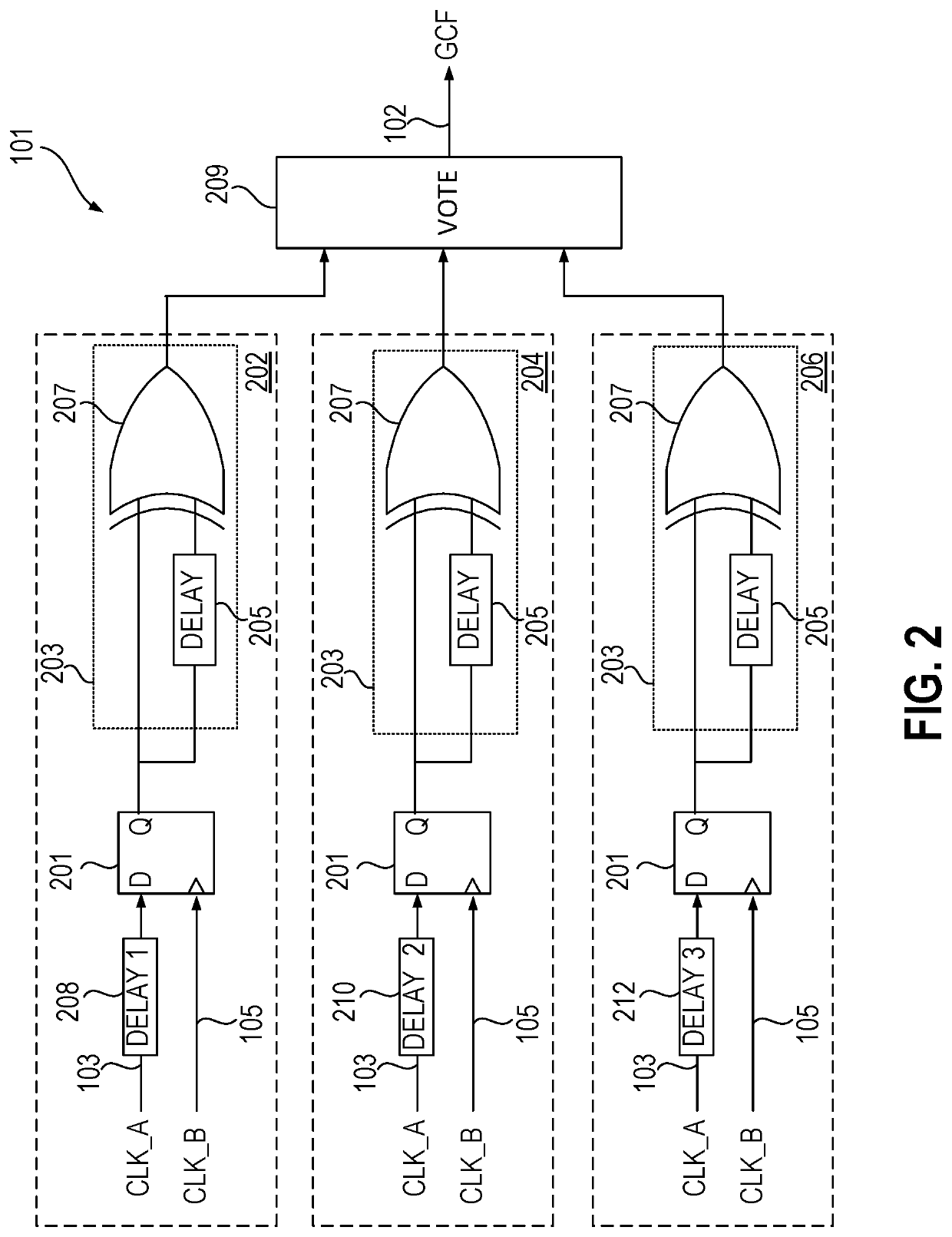Data handoff between two clock domains sharing a fundamental beat
a clock domain and fundamental beat technology, applied in the direction of interprogram communication, multi-programming arrangements, generating/distributing signals, etc., can solve the problems of reducing the bandwidth of the interface between the two clock domains and delay the signal transfer
- Summary
- Abstract
- Description
- Claims
- Application Information
AI Technical Summary
Benefits of technology
Problems solved by technology
Method used
Image
Examples
Embodiment Construction
[0003]Accordingly, in one embodiment a method for transferring data between a first clock domain and a second clock domain includes receiving a first clock signal with a first frequency and a second clock signal with a second frequency. The first clock signal and the second clock signal share a fundamental beat frequency. The method further includes receiving first clock domain data that is synchronous with the first clock signal and supplying a count value from a counter indicative of a current skew between the first clock signal and the second clock signal, the counter resetting at the fundamental beat frequency. The first clock domain data is sampled using the second clock signal to generate second clock domain data, the sampling based, at least in part, on the count value.
[0004]In another embodiment an apparatus includes a greatest common factor detect circuit coupled to receive a first clock signal with a first frequency and a second clock signal with a second frequency and sup...
PUM
 Login to View More
Login to View More Abstract
Description
Claims
Application Information
 Login to View More
Login to View More - R&D
- Intellectual Property
- Life Sciences
- Materials
- Tech Scout
- Unparalleled Data Quality
- Higher Quality Content
- 60% Fewer Hallucinations
Browse by: Latest US Patents, China's latest patents, Technical Efficacy Thesaurus, Application Domain, Technology Topic, Popular Technical Reports.
© 2025 PatSnap. All rights reserved.Legal|Privacy policy|Modern Slavery Act Transparency Statement|Sitemap|About US| Contact US: help@patsnap.com



